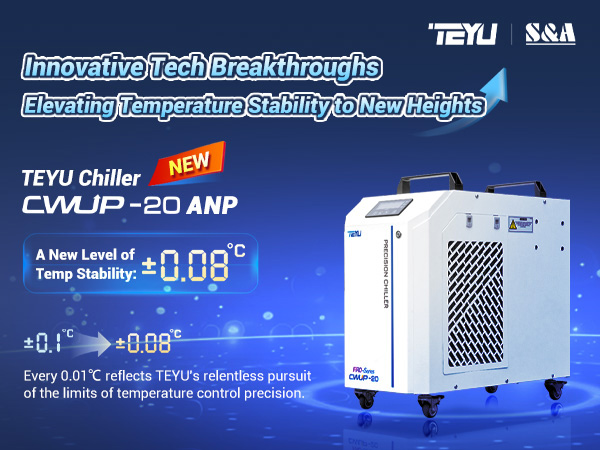Infrared and ultraviolet picosecond lasers require effective cooling to maintain performance and longevity. Without a proper laser chiller, overheating can lead to reduced output power, compromised beam quality, component failure, and frequent system shutdowns. Overheating accelerates wear and shortens the laser's lifespan, increasing maintenance costs.
Why Effective Cooling is Essential for Infrared and Ultraviolet Picosecond Lasers
Infrared and ultraviolet picosecond lasers play a crucial role in industrial processing and scientific research. These high-precision lasers require a stable operating environment to maintain optimal performance. Without an efficient cooling system—particularly a laser chiller—various issues can arise, severely impacting the laser's functionality, longevity, and overall production efficiency.
Performance Degradation
Reduced Output Power: Infrared and ultraviolet picosecond lasers generate significant heat during operation. Without proper cooling, internal temperatures rise rapidly, causing laser components to malfunction. This results in decreased laser output power, directly affecting processing quality and efficiency.
Compromised Beam Quality: Excessive heat can destabilize the mechanical and optical systems of the laser, leading to fluctuations in beam quality. Temperature variations may cause beam shape distortion or uneven spot distribution, ultimately reducing processing precision.
Equipment Damage
Component Degradation and Failure: Optical and electronic components within the laser are highly sensitive to temperature fluctuations. Prolonged exposure to high temperatures accelerates component aging and can lead to irreversible damage. For example, optical lens coatings may peel off due to overheating, while electronic circuits may fail due to thermal stress.
Overheat Protection Activation: Many picosecond lasers incorporate automatic overheat protection mechanisms. When the temperature exceeds a predefined threshold, the system shuts down to prevent further damage. While this protects the equipment, it also disrupts production, causing delays and reduced efficiency.
Reduced Lifespan
Frequent Repairs and Part Replacements: The increased wear and tear on laser components due to overheating results in frequent maintenance and part replacements. This not only raises operational costs but also affects overall productivity.
Shortened Equipment Lifespan: Continuous operation in high-temperature conditions significantly reduces the service life of infrared and ultraviolet picosecond lasers. This diminishes the return on investment and necessitates premature equipment replacement.
TEYU Ultra-Fast Laser Chiller Solution
The TEYU CWUP-20ANP ultrafast laser chiller offers a precise temperature control accuracy of ±0.08°C, ensuring long-term thermal stability for infrared and ultraviolet picosecond lasers. By maintaining consistent cooling, the CWUP-20ANP enhances laser performance, improves production efficiency, and extends the lifespan of critical laser components. Investing in a high-quality laser chiller is essential for achieving reliable and efficient laser operation in industrial and scientific applications.

We're here for you when you need us.
Please complete the form to contact us, and we'll be happy to help you.










































































































